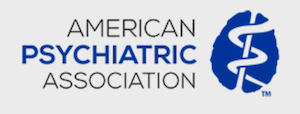Article
Cyberbullying Associated with Depression and Dissociation in Teens
Author(s):
Cyberbullying exacerbates existing mental health conditions among adolescents.

The relatively new phenomenon known as cyberbullying has been found to exacerbate existing mental health conditions among adolescents, according to new research presented on the opening day of the Annual Meeting of the American Psychiatric Association (APA).
At particular risk, the study revealed, are teens who have previously experienced emotional abuse.
Cyberbullying—which has become more and more common and has received wide media attention in recent years—is considered as behavior meant to intimidate another using electronic technology, such as cell phones, computers, and tablets. More specifically, it utilizes communication tools such as social media sites, text and instant messages, chat room conversations, and other web-based technology.1
Rumors spread through social media, embarrassing photos and videos, and fake profiles with embarrassing details are just a few examples of how cyberbullying is conducted. It differs from in-person bullying in that it can happen anywhere, anytime, 24 hours a day, 7 days a week, not just limited to times when the bully encounters his or her victim in person.
In some cases, cyberbullies remain anonymous, attacking without revealing personal information, but distributing damaging messages and images very quickly and to a very wide—and also widely unknown—audience.1 In these cases, it can be impossible to trace the source of the inappropriate or intimidating messages, which can make it very difficult to delete them once they’ve been posted.
According to the National Center for Education Statistics and Bureau of Justice Statistics, in the 2014-2015 school year, 21% of students nationwide experienced cyberbullying.2 Similarly, the Centers for Disease Control and Prevention, in its 2015 Youth Risk Behavior Surveillance System, indicated that an estimated 16% of US high school students were cyberbullied in the 12 months before the survey was taken.3
In the study presented at APA, the researchers, led by Samantha B. Saltz, MD, chief resident at the University of Miami Miller School of Medicine and Jackson Memorial Hospital, looked at cyberbullying victimization among 50 adolescent psychiatric inpatients between 13 and 16 years of age. They related cyberbullying to social media use as well as histories of adverse early life experiences.
They found that most of the study participants engaged with at least 1 type of social networking site 1 or more times a day. Fifty-four percent of the teens used Facebook, 53% used Instagram, 33% used chat rooms, and 30% used Twitter at least once a day. Out of the 50 participants, 20% (10 teens) had been victims of cyberbullying, while only 6% (3 teens) admitted to being the cyberbully.
The 10 cyberbullying victims reported that several social networks had been used to bully them: 6 had been bullied on both Facebook and Instagram, 4 had been bullied on Twitter, and 3 had been bullied inside a chat room. None of the victims reported being bullied by e-mail.
The emotional effects of cyberbullying, according to the study results, included symptoms of depression and dissociation, as well as anger. Previous episodes of emotional abuse were significantly correlated with cyberbullying, while other early-life traumas, such as physical and sexual abuse and physical and emotional neglect, were not.
The research team suggested that educating adolescents about the healthy use of technology, social media in particular, may be helpful.
References
1. US Department of Health and Human Services. What is Cyberbullying. https://www.stopbullying.gov/cyberbullying/what-is-it/.
2. US Department of Education. Student Reports of Bullying: Results From the 2015 School Crime Supplement to the National Crime Victimization Survey. https://nces.ed.gov/pubs2017/2017015.pdf. December 2016. Accessed May 20, 2017.
3. Centers for Disease Control and Prevention. Youth Risk Behavior Surveillance System (YRBSS). https://www.cdc.gov/healthyyouth/data/yrbs/index.htm. Reviewed August 11, 2016. Accessed May 20, 2017.





